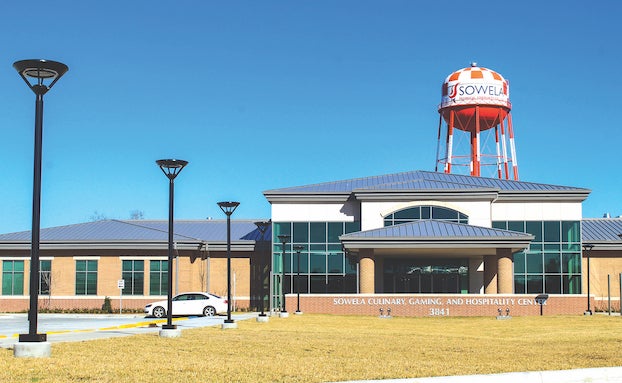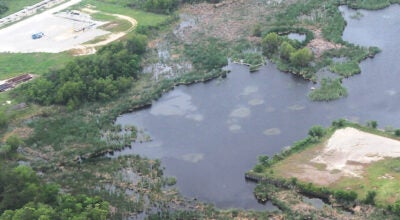Expected economic growth will affect drainage needs
Published 10:32 am Sunday, August 31, 2014
Over the next 12 to 18 months, Calcasieu Parish staff will analyze how to manage drainage in anticipation of the growth that is expected from the more than $70 billion in announced industrial projects for Southwest Louisiana.
Parish staff and planning, engineering and public works officials will update a drainage management study the Police Jury received in 2005. Earlier this month, police jurors got a look at what the parish staff has proposed to do. Steps include creating a study team, hiring a drainage consultant, and coming up with a mission statement, guiding principles and policy objectives.
Parish Administrator Bryan Beam said the quality of life in Calcasieu “will suffer greatly” if officials don’t make sure there is adequate and effective drainage in the parish.
“When you talk about quality of life and all the things that affect it, we find that most people agree that
drainage comes under one of the top things of the ‘have-tos,’ more than ‘it would be nice to,’ ” he said.
Background
Shortly after Sasol in late 2012 announced plans to spend $20 billion on expansions at its Westlake facility, Beam said the parish began to consider revisiting the drainage report. While issues like traffic and housing initially came to light after Sasol’s announcement, Beam said drainage will linger long after those are dealt with.
“To be honest, that’s not the first thing I think people think of when they think of growth,” he said. “Whatever permanent structures are added, whether it’s housing, commercial or industrial, every one of those things … adds to the drainage runoff.”
The 2005 report indicated that drainage was already stressed because of residents moving into unincorporated areas. It said that “urbanization is one of the root causes of problems in trying to effectively manage a drainage system.”
The estimated population in unincorporated areas in 1987 was 59,367. In 2003, that had grown by nearly 34 percent to 79,497 residents. Meanwhile, all municipalities saw a dip in population over that same period.
Beam said drainage would still be a challenge even if the parish didn’t see more growth over the next several years.
Allen Wainwright, the parish’s public works director, said the parish has seen “more than a couple intense rain events.” He said that heightened the need to look at drainage and “brought it to the forefront again, at least in the public’s mind.”
The report
The 2005 study called for centralized drainage master planning within the parish and new ordinances to improve watershed capacity. One required new subdivisions to not create additional stormwater runoff in a particular watershed. The watersheds have a certain capacity to store and carry water.
“You couldn’t create a negative impact,” Wainwright said of new subdivisions. “That means developers were given some options to make improvements to the channels, so maybe they had more runoff. But locally there wasn’t as much impact felt.”
Wainwright said any new construction affects the overall size or volume of water stored in the watershed. He said the new study will look for methods that won’t negatively affect the construction but will protect and preserve the watersheds. Beam said that is part of developing the policy objectives for the new report.
“It is a balance of resources, cost and just trying to get it right for the next generation,” Wainwright said.
Funding
Managing drainage with a growing population will require more money, and Beam said officials will also look at how that is now funded. The parish has a Road and Drainage Trust Fund that comes from a 4.06-mill parishwide property tax. He said they will look at whether there is a need to shift more of that money to drainage or not.
The fund is used for “high-impact drainage and road projects” that drainage districts and cities apply for, Beam said. There are seven drainage districts within Calcasieu Parish. Each district has five commissioners appointed by the Police Jury.
The districts maintain existing drainage laterals, and some districts use federal and state funds, along with money from the Road and Drainage Trust fund and their own millages, for capital improvement projects like installing a pump station.
Modeling
After the 2005 report was issued, the Police Jury authorized parish staff to move forward with master drainage planning. That led to developing a comprehensive modeling system that officials could use to project how certain growth would affect certain drainage watersheds.
Wainwright said the data that were used to create computer models need to be updated because they are nearly 10 years old. He said the drainage laterals where growth is expected should be studied, along with the main laterals that are already being studied.
“Even back then, what would’ve been targeted as potential growth areas has sort of shifted,” Wainwright said. “We’re standing at a much bigger threshold.”
Beam said stakeholders in the development field, as well as the parishwide drainage committee, will receive regular updates on the study. He said there will be “plenty of opportunity for public input.” By June or July, he said, officials plan to have recommendations for updated policies on managing drainage.
“In this growth atmosphere we’re in, everybody realized we’ve got to do everything quick,” Beam said. “We’ll do everything as fast as we can, but you can’t rush something like this.”
Drainage districts
Once the policy recommendations are done, another part of the study will include looking at how the parish and drainage districts operate each day. The drainage districts are created by the state, and each district has its own revenue source. Beam said parish staff will work closely with the districts and get their input on whatever challenges they have.
“We’re simply looking for the best way to manage a service that everybody is impacted by,” Beam said. “To not look at that would be negligent on our part.”





